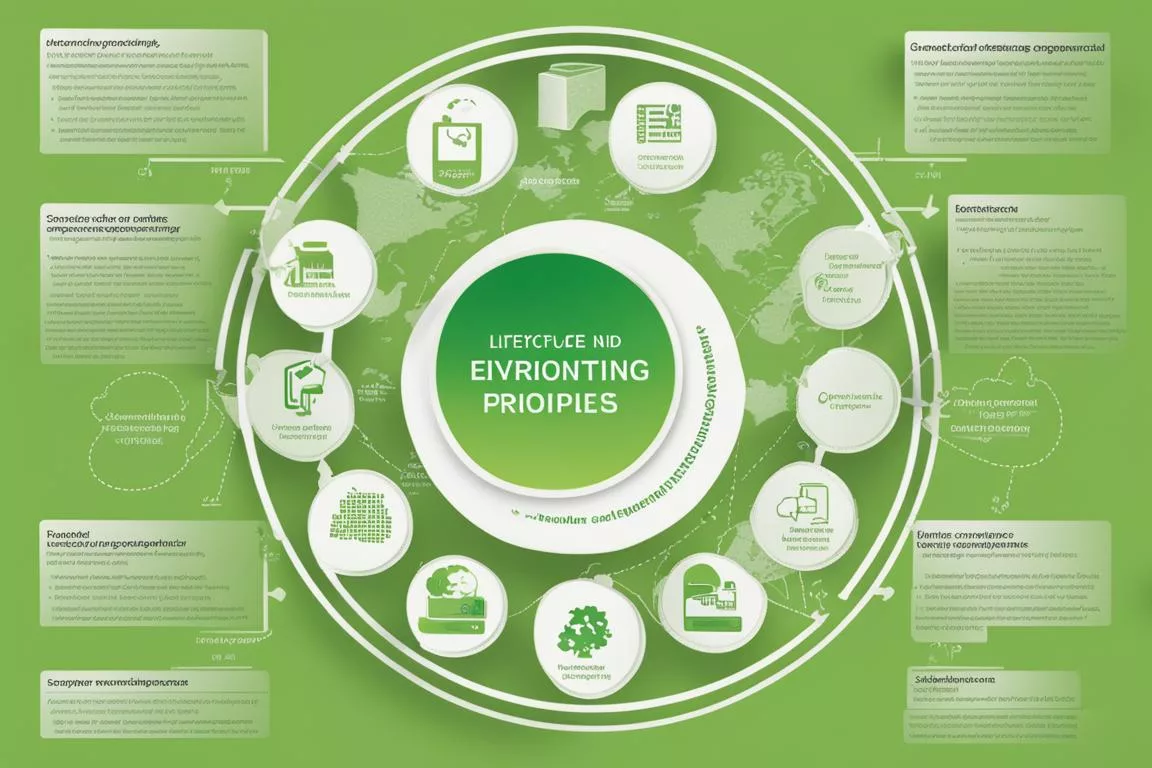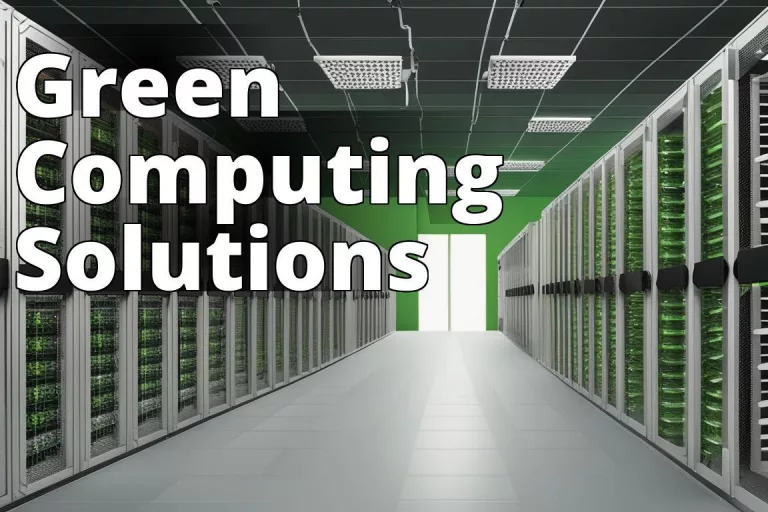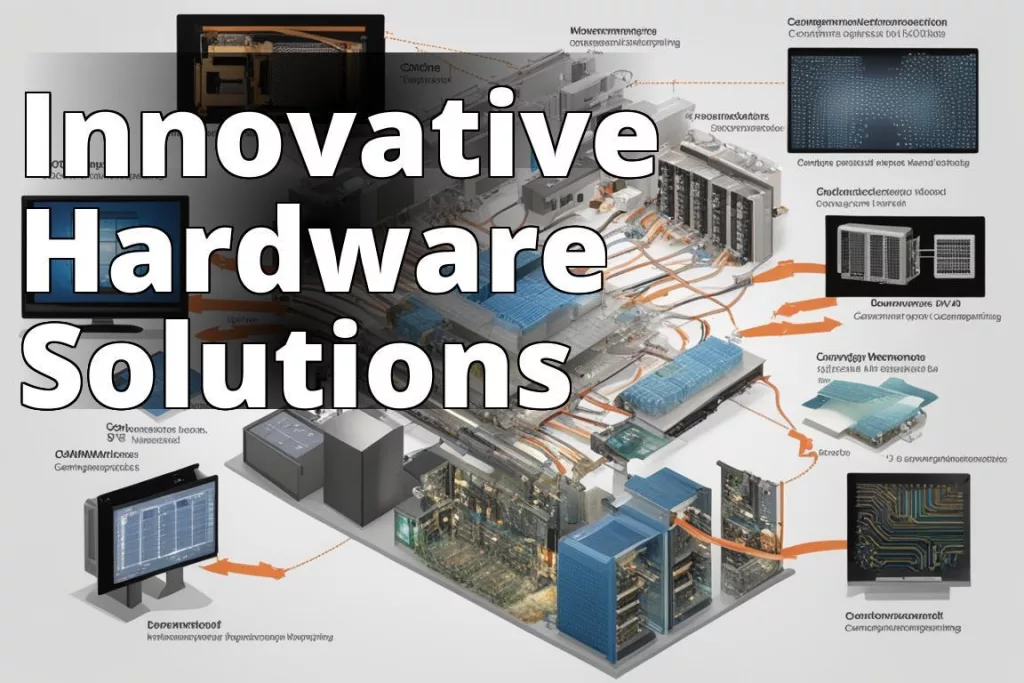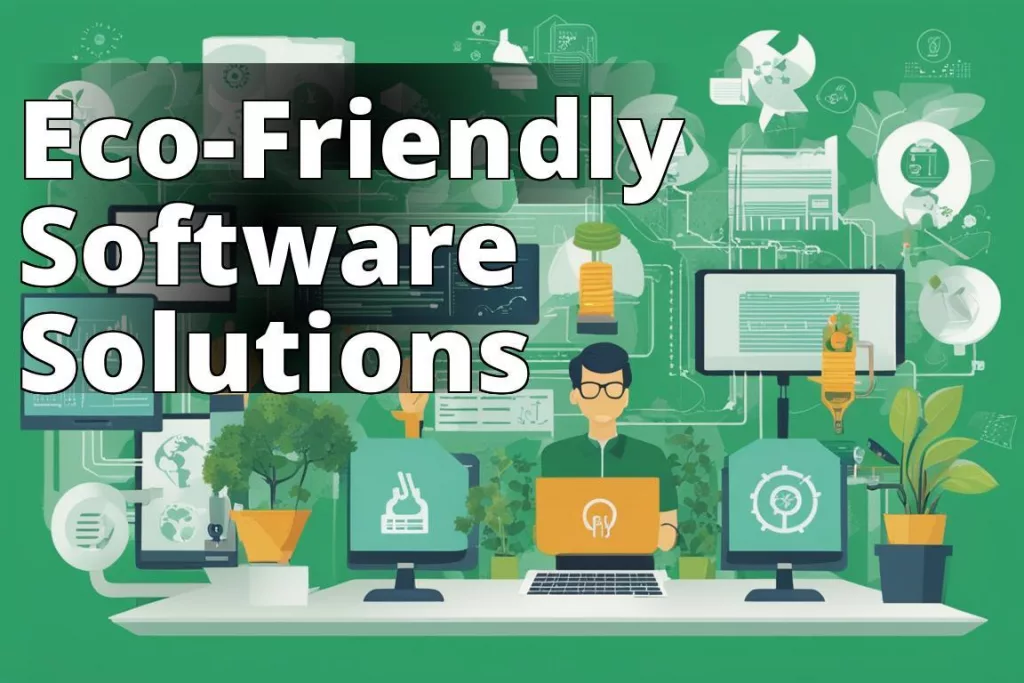Green computing is the environmentally responsible and eco-friendly use of computers and related resources. It encompasses a broad range of practices, from designing energy-efficient hardware and software to the proper recycling or disposal of electronic waste. But it’s more than just a set of practices – it’s a commitment to reducing the environmental impact of our digital activities.
TLDR:
- What is Green Computing?
- Green Computing focuses on reducing the environmental impact of computing activities.
- Why is Green Computing Important?
- It helps in minimizing energy consumption and reducing carbon footprint.
- How Does Green Computing Work?
- Use energy-efficient hardware, software, and practices to promote sustainability.
Why is Green Computing Important?
The significance of green computing lies not only in its potential to conserve energy but also in its ability to mitigate the environmental damage caused by the technological sector. With the global IT ecosystem consuming an estimated 7% of the world’s electricity, the carbon footprint of our digital activities cannot be ignored. The urgency of climate change and the finite nature of our planet’s resources make green computing an essential practice, not an optional one.
Insider Tip: Experts in environmental data analytics are increasingly highlighting the role of data centers in global energy consumption. These facilities alone account for about 2% of the world’s total energy usage.
How Does Green Computing Work?
Green computing works by integrating sustainability principles into the lifecycle of IT products and operations. This includes adopting energy-efficient technologies, designing algorithms and software that require less processing power, and implementing policies that encourage the reduction, reuse, and recycling of electronic devices.

What are the Benefits of Green Computing?
The benefits of green computing extend beyond the environmental to the economic and social. By reducing energy consumption, organizations can significantly lower their operational costs. Furthermore, companies that actively pursue green IT practices often enjoy enhanced brand reputation and compliance with regulatory requirements, not to mention the positive impact on employee morale and the potential for innovation in sustainable technologies.
What are the Challenges of Green Computing?
Despite its obvious advantages, the road to green computing is fraught with challenges. High initial costs for green technologies, lack of awareness, and insufficient standards and regulations are just a few hurdles. Moreover, the rapid pace of technological change often outstrips the lifespan of electronic devices, exacerbating the e-waste problem.
What are the Key Components of Green Computing?
1. Energy-Efficient Hardware
The design and production of hardware that consumes less energy without compromising performance is a cornerstone of green computing. Advances in semiconductor technology, for example, have led to the development of processors that are not only faster but also more energy efficient.
2. Energy-Efficient Software
Software plays an equally crucial role in green computing. Developers are now more mindful of creating code that is optimized for energy efficiency, thereby reducing the overall power consumption of the devices on which it runs.
3. Power Management
Effective power management strategies, such as implementing sleep modes on computers and other devices when not in use, can lead to substantial energy savings. It’s a simple yet often overlooked aspect of green computing.
4. Virtualization
Virtualization technologies allows multiple virtual machines to run on a single physical machine, maximizing resource utilization while minimizing energy consumption and physical space requirements.
5. Cloud Computing
Cloud computing, by centralizing data storage and processing, can significantly reduce energy consumption. It allows for more efficient resource management and scalability, aligning with the principles of green computing.
6. Thin Client Computing
Thin clients, which are less powerful but also less energy-intensive than traditional desktop computers, rely on central servers for processing. This setup not only reduces energy consumption but also extends the lifespan of hardware.
7. Telecommuting
Remote work or telecommuting reduces the need for physical office space and the associated energy consumption. It also cuts down on emissions from commuting, aligning with green computing goals.
8. E-Waste Management
Proper disposal and recycling of electronic waste are vital to minimizing the environmental impact of computing. E-waste management involves everything from safe disposal practices to refurbishing and recycling programs.
What are the Best Practices for Green Computing?
To implement green computing practices effectively, consider the following best practices:
- Track Base Energy Usage: Begin by understanding your data center’s current power consumption to identify areas for improvement.
- Right-Size Servers: Optimize server usage by virtualizing servers and decommissioning underutilized ones to reduce energy consumption.
- Modify Temperature Settings: Adjust temperature settings in data centers to optimize cooling efficiency and reduce energy usage.
- Invest in Renewable Energy: Consider utilizing green energy alternatives like geothermal cooling, wind power, and hydroelectric power to power and cool data centers.
- Promote Sustainable Software Development: Encourage efficient coding practices to minimize energy consumption in software design and execution.
- Optimize Data Centers: Arrange servers for optimal airflow, upgrade cooling systems, and implement hot and cold aisle containment strategies to enhance energy efficiency.
- Partner with Green IT Vendors: Collaborate with vendors offering energy-efficient technologies and organizations promoting sustainable IT options to support green computing initiatives.
By incorporating these practices, businesses can reduce their carbon footprint, lower energy costs, and contribute to a more sustainable future while enhancing operational efficiency and performance.
Insider Tip: Consider employing cloud-based solutions for data storage and processing. Not only does this reduce the energy consumption of maintaining on-premises data centers, but it also taps into the scalability and efficiency of cloud platforms. (The Benefits of Cloud Computing and Data Storage for Scientific Research)
What are the Best Tools for Green Computing?
To promote green computing, consider implementing the following best tools and practices:
- Invest in Energy-Efficient Hardware: Opt for hardware that is energy-efficient to reduce power consumption.
- Virtualization: Utilize virtualization to consolidate servers and optimize resource usage, leading to energy savings.
- Power Management: Implement power management tools to regulate energy usage and reduce wastage.
- Server Monitoring Tools: Tools like Zabbix, Netreo, and Paessler PRTG Network Monitor help track utilization for efficient resource allocation.
- Green Software Development: Embrace green software development practices that focus on minimizing energy consumption in software design and implementation. Read more here: Green Software Engineering: an Overview
Conclusion
Green computing is not merely a trend but a fundamental shift in how we view and manage our technological resources. By embracing the principles of green computing, we can significantly reduce our environmental footprint, save costs, and pave the way for a sustainable digital future. It’s a journey that requires commitment, innovation, and collective action, but the benefitsfor our planet, our economies, and our societiesare well worth the effort.
Answers To Common Questions
What are the fundamentals of green computing?
Green computing involves using eco-friendly technology to reduce energy consumption and minimize electronic waste.
How can green computing benefit environmental data analytics?
Green computing can help environmental data analytics by reducing carbon footprint and promoting sustainable practices.
Who can implement fundamentals of green computing?
Anyone using electronic devices can implement green computing practices to contribute to environmental sustainability.
What if I don’t have the budget for green computing?
There are cost-effective ways to implement green computing, such as energy-efficient settings and proper e-waste disposal.
How do I measure the impact of green computing on data analytics?
You can measure the impact through energy savings, reduced carbon emissions, and overall environmental footprint reduction.
What are some objections to green computing in data analytics?
Some may argue that green computing is costly or requires significant technology upgrades, but the long-term benefits outweigh these concerns.
Next Steps
Round Table Environmental Informatics (RTEI) is a consulting firm that helps our clients to leverage digital technologies for environmental analytics. We offer free consultations to discuss how we at RTEI can help you.


